
Save this storySave this storySave this storySave this storyYou’re reading the Food Scene newsletter, Helen Rosner’s guide to what, where, and how to eat. Sign up to receive it in your in-box.
The day before your dinner at Blanca, you receive an e-mail from the restaurant bearing a set of friendly but pointed instructions: Don’t be late, or the meal will begin without you. No allergies, no substitutions, no special requests. Come to the main entrance of Roberta’s, the sceney east Bushwick pizzeria. Give your name to the host. Await further guidance. The instructions, though moderately intimidating, are somewhat necessary—Blanca, a $275-a-person tasting counter, has no street entrance—and the experience of arriving is actually pretty chill. After a minute or two hanging out by the bar at the back of the main Roberta’s dining room, someone will pop over to escort you through the complex of micro-environments that makes up what we refer to collectively as “Roberta’s”: out through the bar door; past the Heritage Radio Network podcast studio, in a shipping container; through a tented tiki bar; and across an open expanse of asphalt courtyard. At last, you’ll come to the door that leads to Blanca, which has only recently resumed service after closing in the early days of the pandemic.
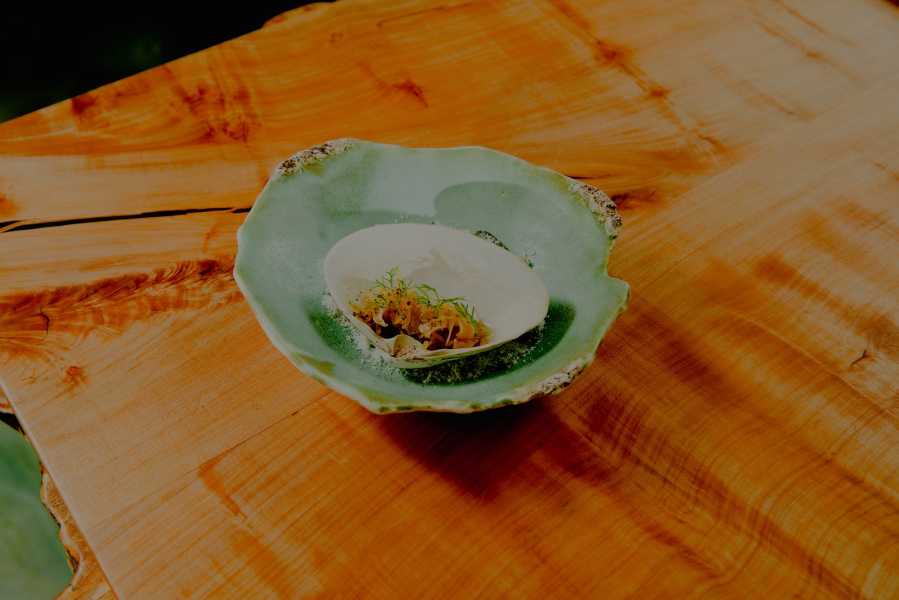
Raw surf clam is dressed in yuzu sauerkraut and sits atop a starchy dollop of sweet-potato mash.
Brandon Hoy and the chef Carlo Mirarchi, the owners of Roberta’s, first opened Blanca in 2012. They offered an enormously ambitious tasting menu that simultaneously stuck a middle finger up at the conventions of ultra-high-end dining and remained firmly within its framework. It was dizzyingly expensive, edgy-cool in a way that was more than a little terrifying, and (if you could manage to get a seat) a total blast. The studio-like space—minimally decorated, sort of Japanese-ish, with an enormous tuna head mounted on the wall—was mostly given over to the open kitchen. A dozen or so diners lined up along a bar-height counter, watching the action of a corps of cooks like judges at the culinary Olympics. In one corner sat a few stacks of LPs and a record player that anyone in the restaurant, civilian or crew, could wander over and commandeer. The servers poured generous servings of weird and excellent wines. The menu was precise, modernist, Italian-inflected, and often willfully bizarre.
The communal, rakish, off-the-cuff ambience remains blessedly intact in Blanca’s second coming. The daily business of dinner is now overseen by the executive chef Victoria Blamey, an artful, intellectual, Chile-born cook who has spent most of her New York career making approachable, crowd-pleasing food at the helm of stalwart institutions like Gotham and Chumley’s. Under her aegis, the restaurant’s original attitude of confrontational quasi-Italianness has been refreshed by more than a splash of Blamey’s offbeat demi-Chilean culinary palette. (Aspects of Blanca 1.0’s style of cooking have lived on at Foul Witch, their à la carte—but no less intense—spot in the East Village.) The world of restaurants is different than it was when Blanca opened a dozen years ago, or even from when it closed four years ago. A tasting counter run by a chef-auteur was, not so long ago, considered a thumb bitten at the formality of white-tablecloth dining. Now it is a fairly conventional way to eat a fancy meal. The high-low tension of hiding an ultra-fancy restaurant in the back of a graffiti-covered pizza parlor has lost most of its speakeasyish novelty. More than ever, the measure of a place like Blanca is what goes in your mouth.
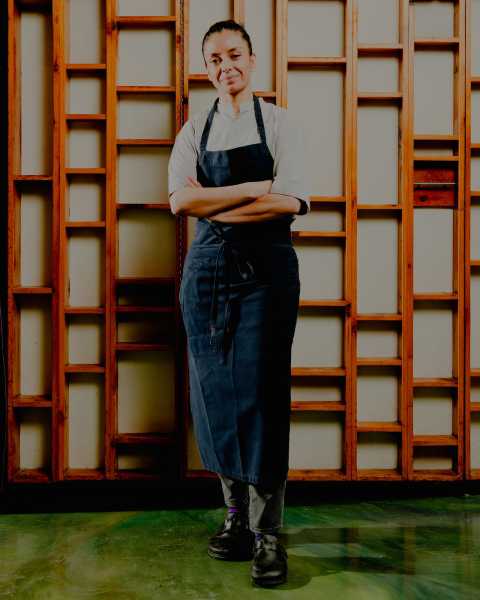
Before becoming executive chef at Blanca, Victoria Blamey spent most of her New York career at stalwart institutions such as Gotham and Chumley’s.
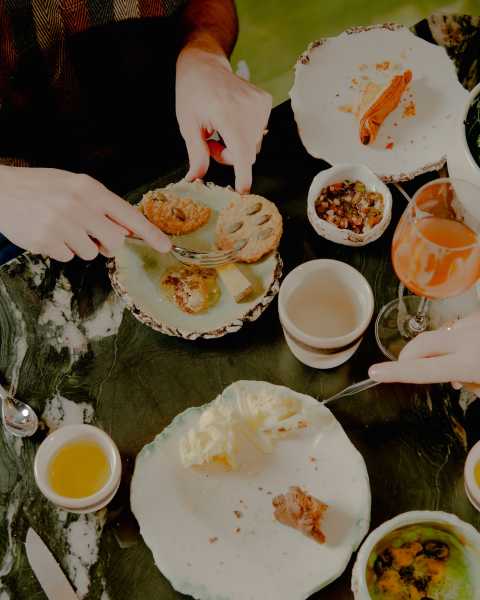
Dessert never goes fully sweet: a cheese plate features crumbly homemade oat crackers and a pool of honey.
Blamey’s early C.V. includes time spent at places like Mugaritz, in Spain, and the now-closed Lower East Side spot wd~50—restaurants famous for high-concept dishes and boundary-pushing wizardry with ingredients, where meals engage diners’ mental faculties as much as their sensory apparatuses. She got to flex her finely tuned and slightly esoteric sensibility at Mena, the excellent but short-lived restaurant where she cooked before Blanca. There, she served dishes that zinged and riffed and retooled classical frameworks. I still think longingly about a dessert that confidently pulled off an odd-couple pairing of kelp and chocolate. Mena’s chou farci, a leaf of savoy cabbage filled with layers of mousse of scallop and sea lettuce and scallop mousse, was so inspired that the current “Top Chef” contestant Danny Garcia, a former Mena cook, saw fit to replicate it on a recent episode—without acknowledging Blamey—and won.
What Blamey creates when she’s freed from any need to play to the whims of à la carte diners turns out to be even more experimental, and often a bit challenging. Blanca, now as before, is not Fancy Dining 101: Flavors are strong, unexpected, and occasionally disorienting, as in a bowl of tender pasta purses filled with lavender and snails, or a length of sweet king-crab leg draped in a vanilla-scented sauce reminiscent of melted ice cream. (On one of my visits, the crab itself, enormous and wildly gesticulating, an eldritch Old God of the deep, made an appearance in the open kitchen. Reader, I shrieked, and I wasn’t the only one.) Some dishes appear initially to be straightforwardly delicious but on second or third bite reveal a seemingly intentional disharmony. The lively, lightweight brininess of a raw surf clam dressed in yuzu sauerkraut, for example, is undermined by the starchy dollop of sweet-potato mash that waits at the bottom of the shell in which it’s served. A leche de tigre thickened with squash purée similarly pulled the rug out from under the clean vivacity of an uni-topped ceviche. The service is casual, companionable, not overbearing—each dish gets only a brief precis of its provenance or preparation—leaving the often strange unfolding of each dish to be experienced, rather than explained, while songs such as “Swing Easy,” by the Soul Vendors, warble warmly from the speakers.
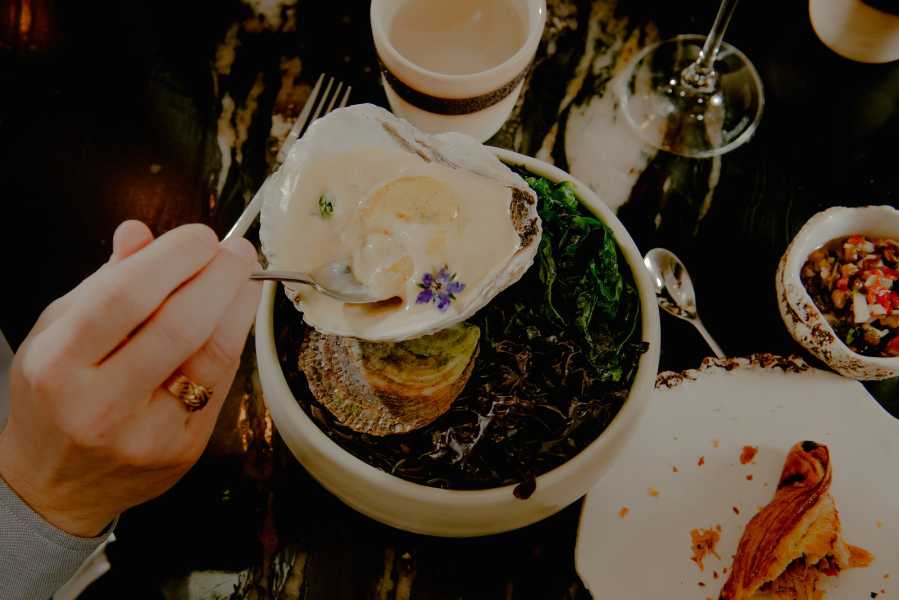
A belon oyster is draped in a creamy sauce.
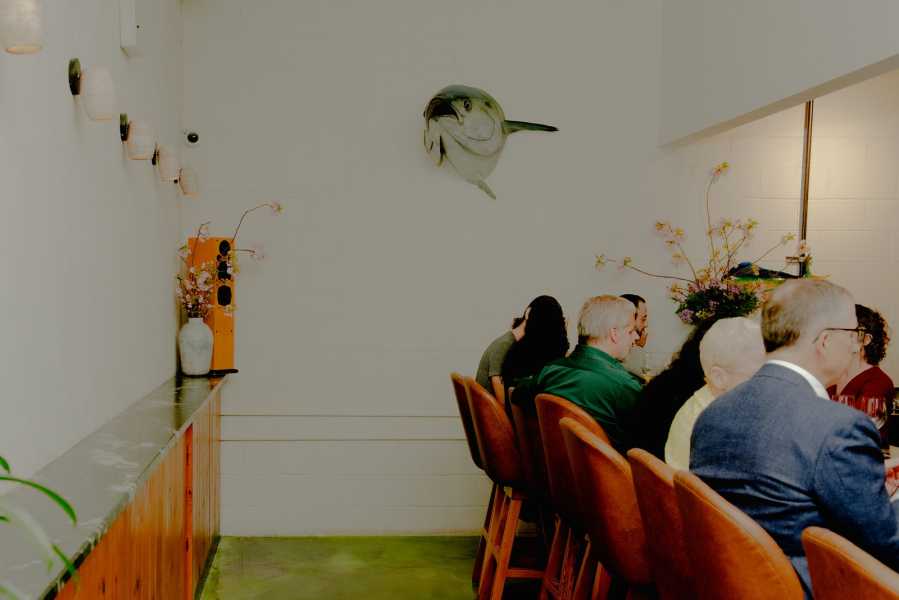
Guests arrive through the Roberta’s dining room before being escorted to Blanca, which has no entrance of its own.
Aesthetically, philosophically, this is all rather thrilling, and arguably incredibly cool, the culinary equivalent of jolie laide. But taste is an experience of reflexive sensation, not of intellect. Both of my meals at Blanca began exuberantly, with petite vessels of citrus segments and a chile grenada granita, sweet-tart and clarion-bright—then, digging in a fork, the diner unearths one of the tiny fermented brussels sprouts buried beneath, relatively bland little spheres of dark, sulfuric mush. The dish is an exclamation point that becomes an interrobang and then slumps into a question mark. Whenever a course arrived that was just straight-up delicious, no sleight-of-hand—like Blamey’s tortilla al rescoldo, a Chilean bread studded with hunks of chewy pork belly and baked in ash, served with a frosting-like smear of daffodil-yellow cultured butter—I was almost giddy with relief. (That bread, it must be said, is so wonderful—dense and chewy and funky with pork fat—that even if you’re a cautious, risk-averse diner, it may be worth the price of admission on its own.) And there are times when the flavor-chemistry esoterica feels revelatory. A hunk of Spanish mackerel, oily and rich, sings atop a fuzz-green emulsion of lemony sorrel. Tempura-fried morsels of taro nome (angelica tree buds, with a broccoli-ish shape and a tender chlorophyllic flavor) dusted with powdered sugar offer a cockeyed, springtime take on funnel cake.
Helen, Help Me!
E-mail your questions about dining, eating, and anything food-related, and Helen may respond in a future newsletter.
Little is made of dessert at Blanca. After a climactic savory course—an excellent play on roasted pheasant, on my visits, complete with souvenir feather, though the kitchen has recently switched to lamb—things never quite go fully sweet. You’ll get ice cream, but it might have a dollop of parsnip purée beneath and a wodge of briny caviar on top, a callback to the original Blanca, where the roe was served with a parsnip granita. Then there’s a cheese plate, a pale slice of something creamy and a little bit sour, with a pool of honey and a few gloriously crumbly oat crackers, like house-made Hobnobs, which are decorated with pepitas. After such a high-wire act of a meal, this is a strikingly homey closing note: soft, tender, nostalgic. I kept waiting for something to jump out, to twist the pleasure a little bit, to make me question what the hell was going on: a lashing of chile? A note of bitterness? No, it was simply lovely cheese, lovely honey, a lovely cracker. It was delicious—but Blamey had trained me to wish, a little bit, that it was something more. ♦
Sourse: newyorker.com